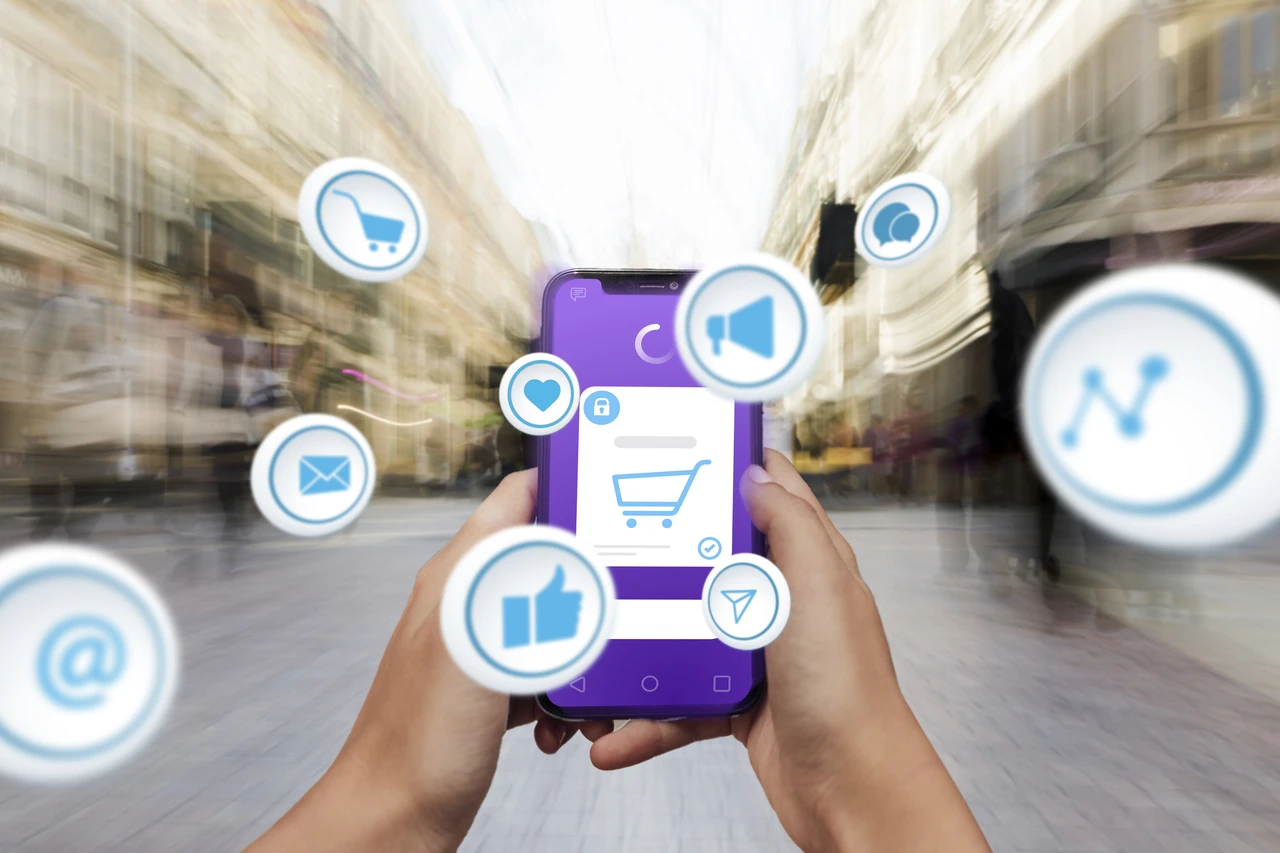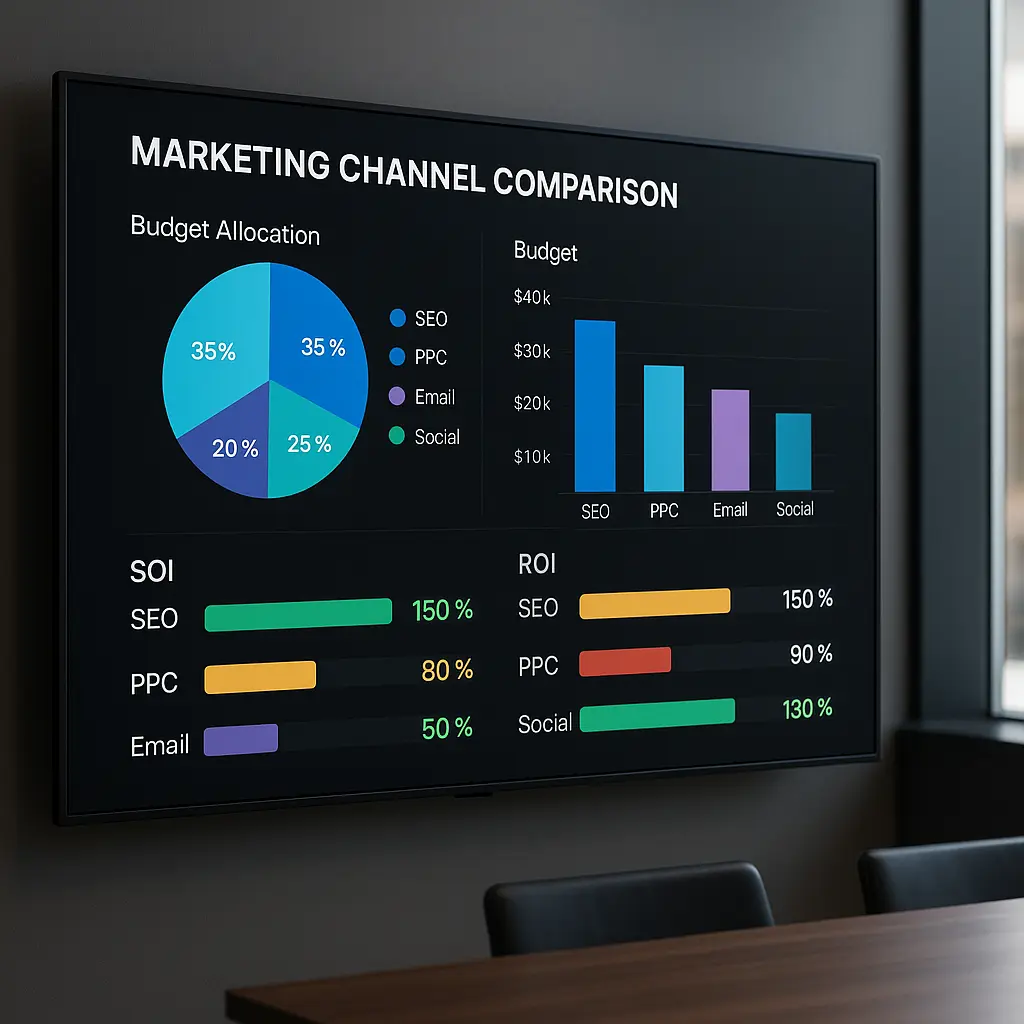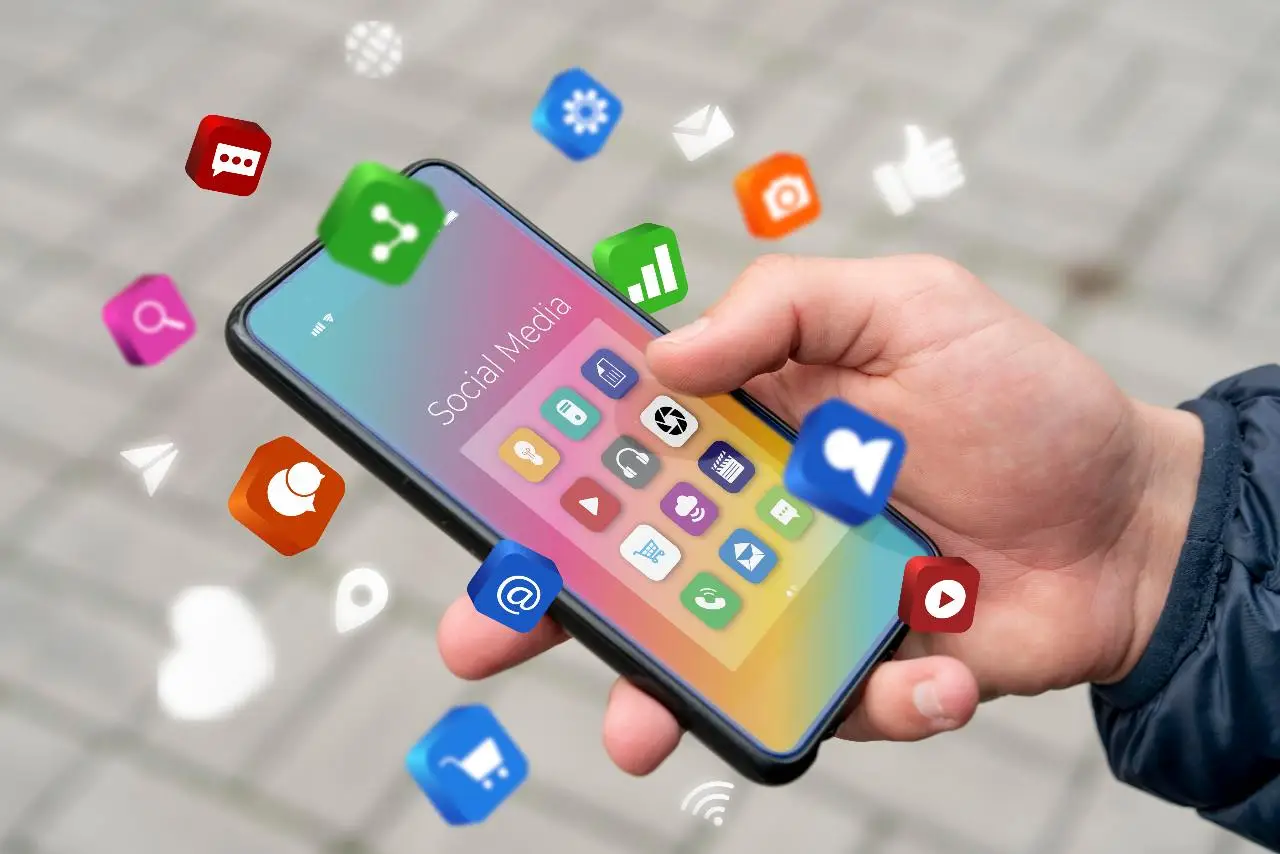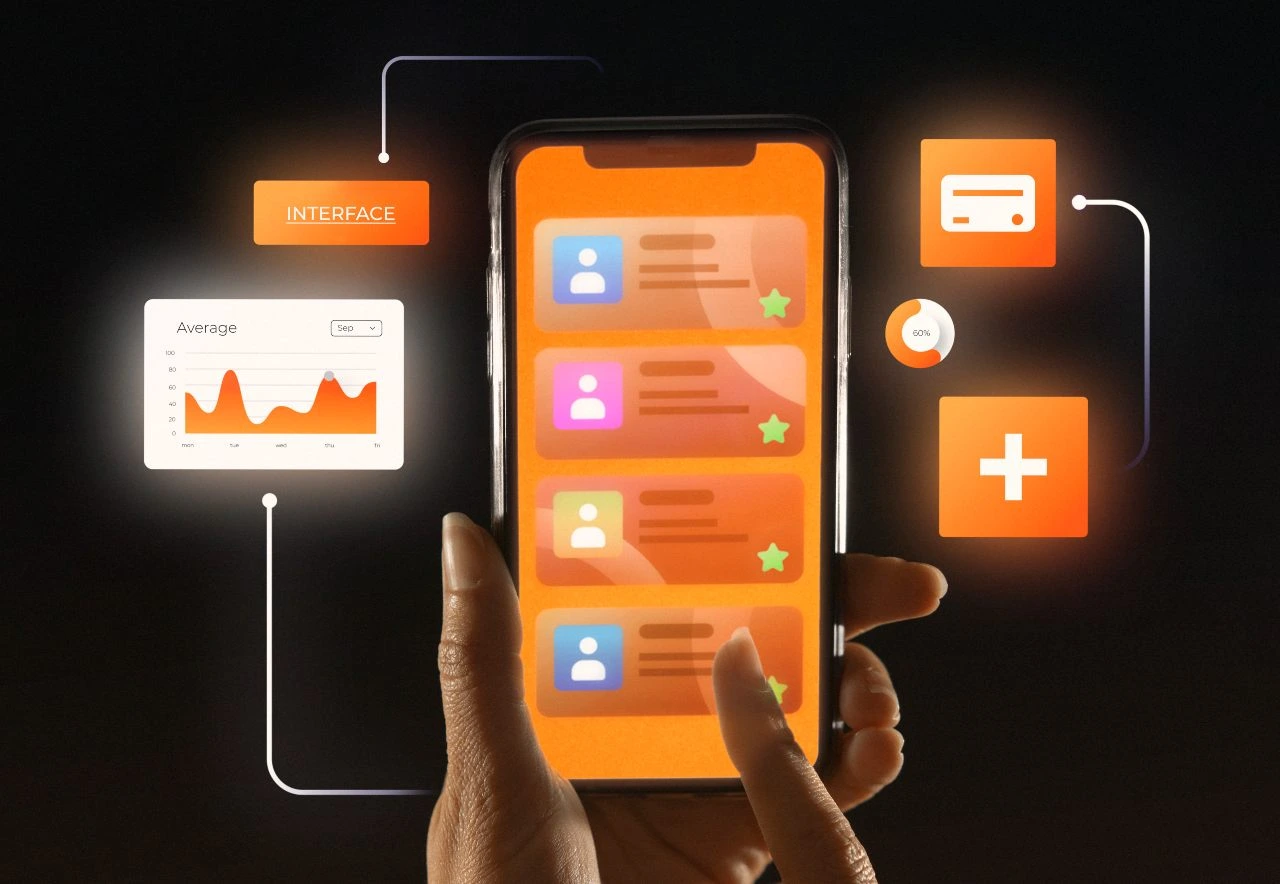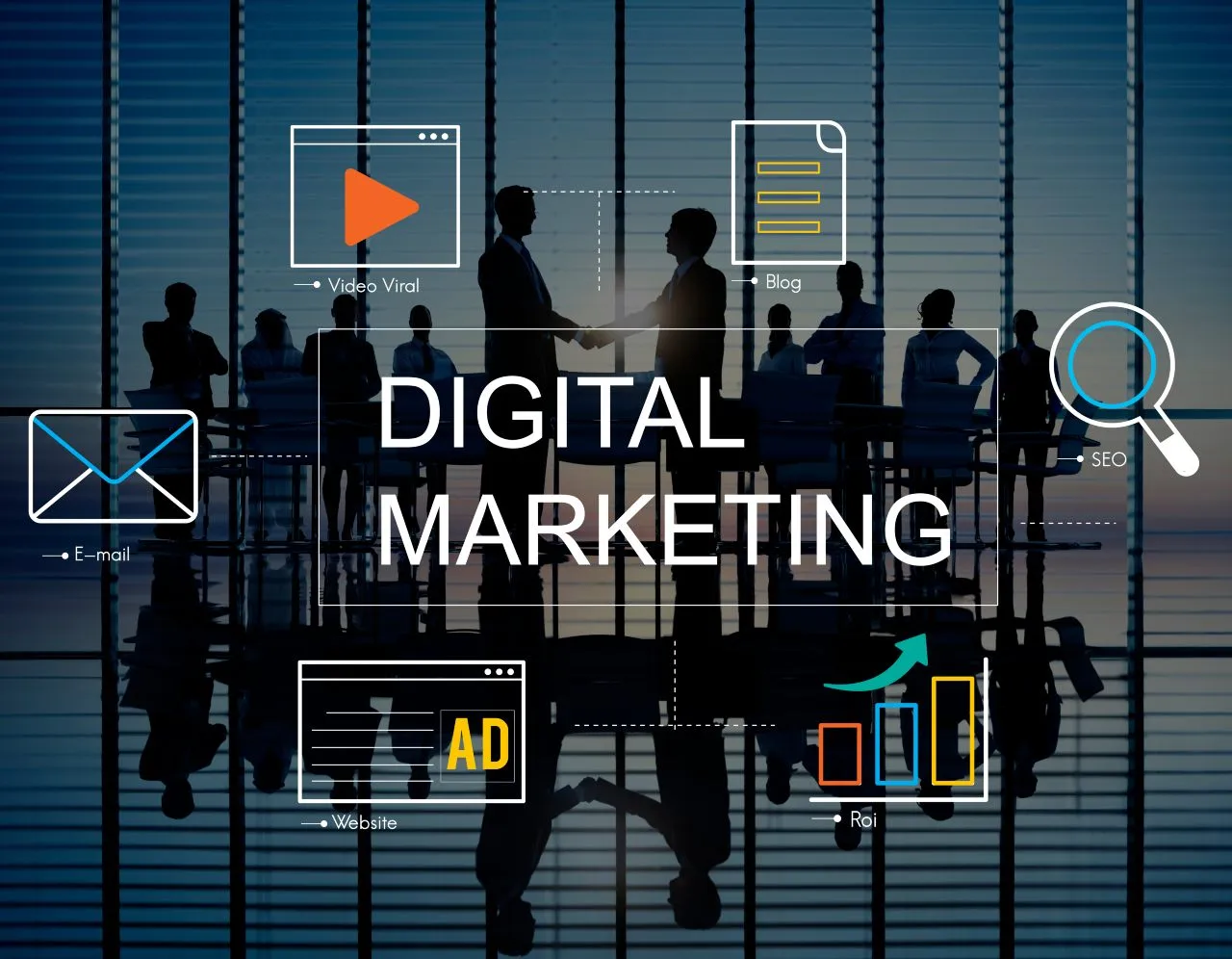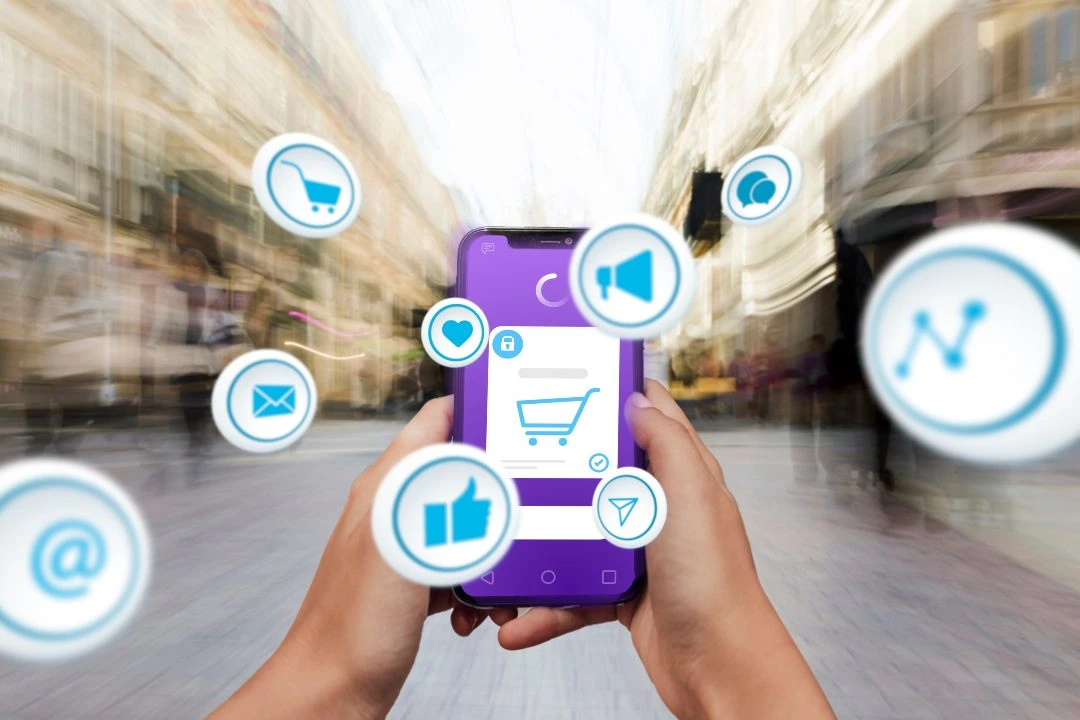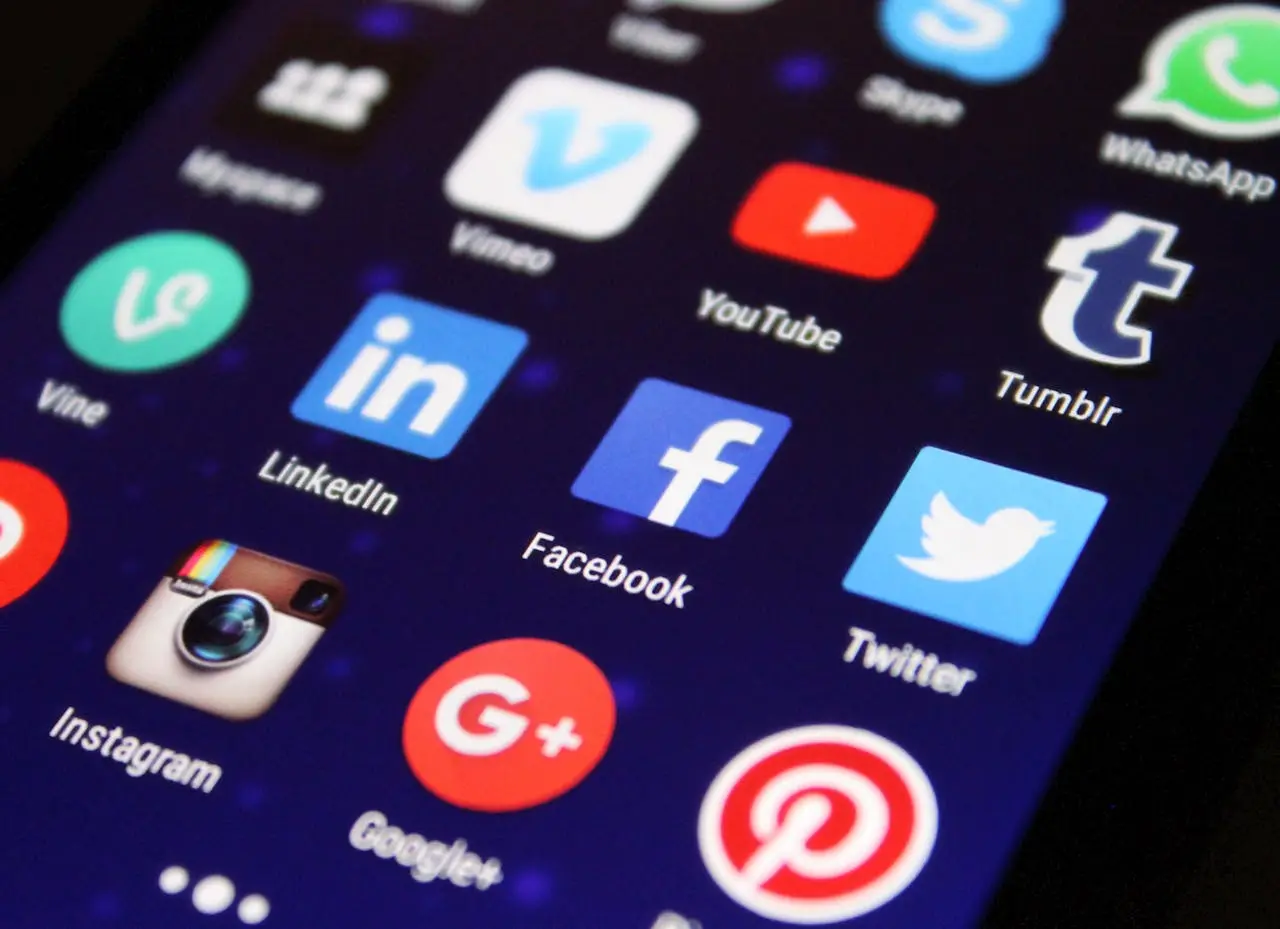In the rapidly evolving landscape of digital marketing, keeping abreast of the latest social media advertising trends is critical for success. With billions of users worldwide accessing social platforms primarily through their mobile devices, understanding how to effectively reach and engage your target audience on these channels is more important than ever.
From the dominance of mobile-optimized content and the explosive growth of mobile video to the rise of immersive experiences powered by 5G technology, there are numerous opportunities for brands to connect with consumers in innovative and impactful ways. Let’s explore the key social media advertising trends shaping the future of marketing, offering valuable insights and actionable strategies to help you stay ahead of the curve in 2024 and beyond.
Rise of Voice Search and Audio Advertising: What It Means for Brands
The rapid adoption of voice technology and audio platforms is reshaping how consumers interact with content. From issuing commands to voice assistants like Alexa or Siri to tuning into podcasts during commutes, audiences crave hands-free solutions that seamlessly fit into their lives. For brands, this isn’t just an opportunity—it’s a call to innovate. Connecting with consumers through voice search optimization and audio advertising can unlock new ways to stay top-of-mind in a highly competitive digital landscape.
- 41% of adults in the U.S. already use voice search regularly, and adoption is only growing.
- By 2025, over half of all smartphone users are expected to interact with voice commands daily, signaling an essential shift in content strategies.
- To rank in voice search results, focus on natural language and long-tail keywords that mimic conversational speech.
- Since many voice queries are location-specific, local SEO optimization is vital.
- A key tactic to boost visibility is structuring content to earn featured snippets by answering common questions clearly and concisely.
Brands that prioritize voice and audio in their marketing strategies are better positioned to meet evolving consumer expectations, particularly as smart home devices and in-car assistants become ubiquitous. Remember, voice search users often seek immediate, actionable results, making it crucial to adapt your content for quick engagement.
Pro Tip:
Don’t underestimate the power of audio advertising in tandem with voice search. Explore platforms like Spotify or Apple Podcasts to create engaging ads tailored to listeners’ preferences. By pairing conversational SEO with audio marketing, you can establish a unified presence in the hands-free, on-the-go world of your audience. For businesses looking to enhance their overall digital marketing approach, combining voice search optimization with broader digital marketing strategies for small businesses can ensure a comprehensive and competitive edge.
The Rapid Evolution of Mobile Commerce and Consumer Behavior
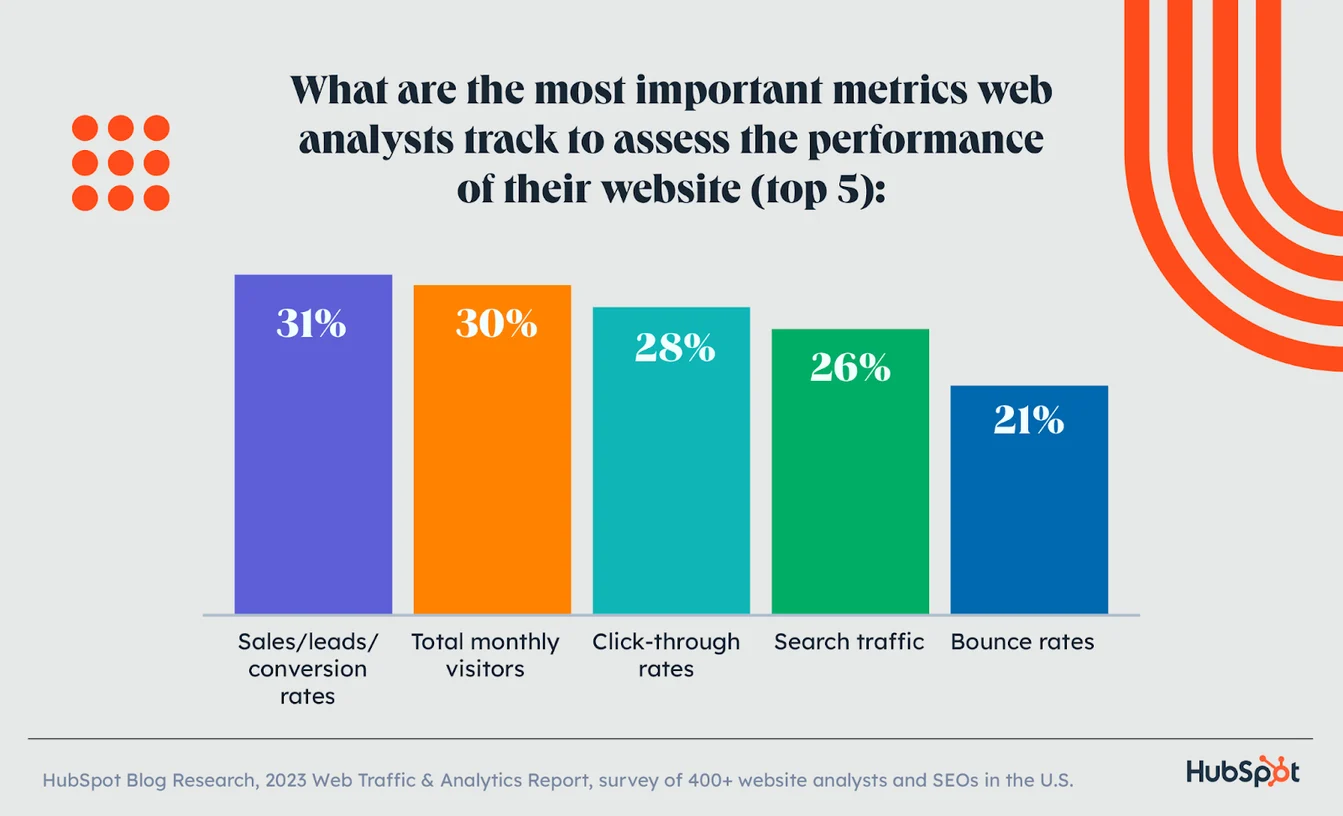
Source: HubSpot
Mobile commerce is no longer an emerging trend; it has become a dominant force shaping consumer behavior and purchase decisions. With smartphones serving as the go-to device for everything from research to conversions, businesses must prioritize mobile-first strategies to remain competitive. What sets successful brands apart is their ability to create personalized, seamless, and engaging mobile experiences that go beyond convenience to foster loyalty and trust.
Here’s a snapshot of the latest trends and statistics shaping the mobile commerce landscape:
- 67% of mobile users are more likely to purchase from brands offering mobile sites or apps customized to their location. Source
- 30% of shoppers prefer using a company’s mobile site for one-time purchases. Source
- 51% of smartphone users favor mobile apps that reward them with points or deals. Source
- 54% of consumers have made a purchase after receiving a deal via Mobile Wallet. Source
- Over half of global website traffic (54%) comes from mobile devices, emphasizing the need for mobile-optimized websites. Source, Source
- Smartphones accounted for 75% of U.S. retail site visits and 66% of online shopping orders in Q1 2024. Source, Source
- A striking 91% of mobile users have made a purchase after viewing a relevant ad. Source
- Mobile commerce sales are set to hit $2.52 trillion by 2024, representing a 16.3% year-over-year increase. Source
- Shopping through apps has grown significantly, with app engagement up 48% compared to the average app. Source
- Social media is a critical driver of mobile purchases, with 55% of users making a purchase after discovering a product on platforms like Instagram or TikTok. Source, Source
- 92% of mobile users transition from search to purchase after finding relevant results. Source
- SMS marketing is on track to hit $12.6 billion in the U.S. by 2025, with a 20.3% annual growth rate. Source
- Augmented reality (AR) is gaining traction, with 61% of shoppers preferring retailers that offer AR experiences for product exploration. Source
Key Takeaway: Mobile is Driving the Future of Commerce
Mobile isn’t just a touchpoint; it’s becoming the centerpiece of the customer journey, blending discovery, engagement, and conversions. From location-based personalization to app rewards and AR integrations, mobile marketing is evolving rapidly to meet consumer expectations. Businesses that fail to invest in mobile optimization risk losing relevance in an ecosystem where convenience and immediacy reign supreme.
Pro Tip:
Stay ahead of the curve by integrating AI-driven personalization tools, enhancing mobile checkout processes for speed and simplicity, and leveraging emerging technologies like AR and voice search. These innovations can transform your mobile experience from just functional to truly exceptional.
The Surging Momentum of Mobile Ad Spending
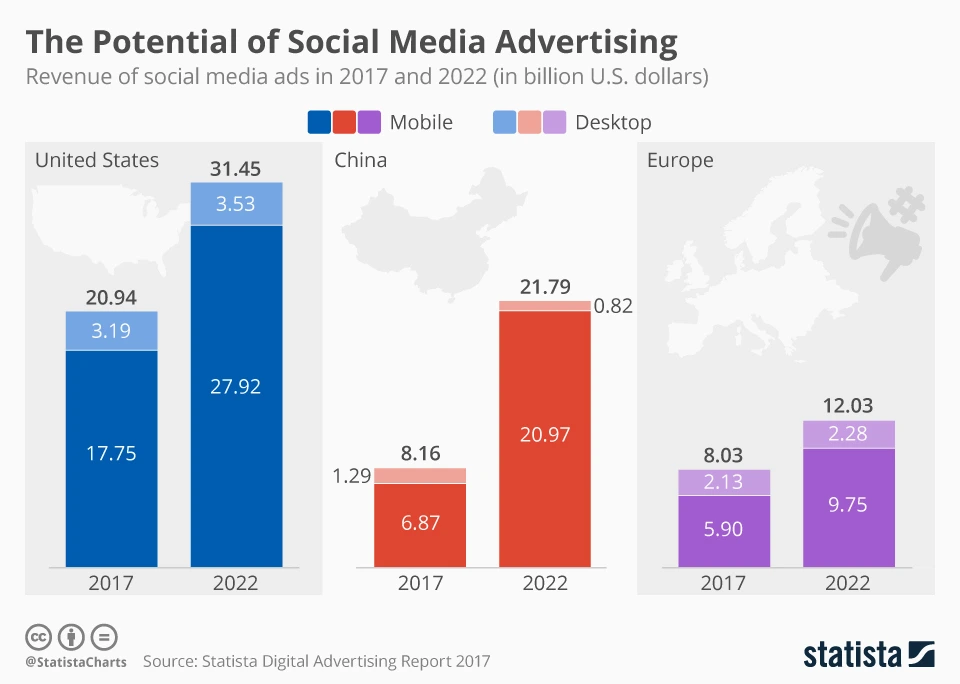
Source: Statista
Mobile advertising continues to reshape the digital marketing landscape, with brands capitalizing on the unmatched reach and engagement that mobile platforms provide. As users increasingly prioritize mobile devices for everything from entertainment to shopping, advertisers are following suit by directing larger portions of their budgets toward mobile-first strategies. This trend isn’t just about spending more—it reflects a shift toward optimizing for how modern consumers interact with digital content. Let’s dive into some key data points driving this acceleration:
- Worldwide spending on mobile advertising is projected to reach $402 billion in 2024, representing an 11% increase from the previous year, driven primarily by short-form videos and video-sharing apps. Source
- In the U.S., mobile ad spending is expected to exceed $216 billion in 2024, up from $194.8 billion in 2023, reflecting an 11.1% growth rate. Source
- The U.S. leads in mobile ad spending, with over $200 billion annually, followed by China, which spends nearly $150 billion each year on mobile ads. Source
- It is estimated that 70% of all ad spending will be on mobile by 2028. Source
- Paid mobile ads on YouTube are 84% more likely to be effective compared to traditional TV ads. Source, Source
- Social media ad spending is projected to reach $219.8 billion in 2024, with mobile driving $255.8 billion of this by 2028. Source
- In 2023, social media received the most investment in mobile advertising. Source
Key Takeaway: Mobile Advertising is Dictating the Future of Digital Marketing
The era of mobile advertising dominance is no longer on the horizon—it’s here. Brands that neglect mobile-first strategies risk being left behind as consumers increasingly favor mobile platforms for discovering, engaging with, and purchasing from brands. Short-form videos, social media content, and platforms like YouTube are redefining what effective mobile marketing looks like, and the emphasis on mobile ad spend is a clear indicator of where the future lies.
Pro Tip:
Go beyond just allocating budgets to mobile—focus on creating mobile-specific ad experiences. Leverage vertical video formats, optimize for speed and UX on mobile devices, and test platform-specific creative designed to maximize engagement and conversions.
Mobile-First Social Media: The Power of Smartphones and Video in Advertising
With mobile devices at the heart of our digital lives, they’ve become the primary access point for social media platforms. This shift has transformed how brands approach advertising, creating a clear mandate: mobile-first strategies are no longer optional—they’re essential. As mobile video consumption skyrockets and platforms like YouTube, Instagram, and TikTok continue to refine their mobile experiences, advertisers have an unprecedented opportunity to connect with users on the go. Let’s dive into the key stats that reveal the current mobile-driven landscape of social media advertising:
- As of July 2024, there are 5.17 billion social media users worldwide, with mobile devices being crucial for accessing these platforms. Source
- A staggering 99% of social media users access these platforms from their mobile phones, emphasizing the need for mobile-optimized content in digital marketing. Source, Source
- Approximately 98.5% of Facebook users access their accounts via mobile devices. Source, Source
- Almost 90% of YouTube visits originate from mobile devices. Source
- By 2028, the number of social media users is expected to reach 6.05 billion. Source
- 71% of U.S. Gen Z social media users (ages 18-26) are likely to make a purchase directly on Instagram. Source, Source
- YouTube remains a leading platform, with over 500 hours of video uploaded every minute and 70% of its videos watched on mobile devices. Source
- Mobile devices are the preferred choice for watching social media videos, with 92% of videos viewed on these devices being shared. Source
- Facebook sees over 8 billion video views daily, while Instagram has experienced increased video consumption, especially with the addition of Reels. Source
- Shoppable video ads are gaining traction on platforms like Instagram, Pinterest, TikTok, and YouTube, significantly boosting conversion rates through interactive videos. Source
- Captions are crucial for accessibility and engagement, as 92% of users watch videos without sound on social media. Source
- Short videos, particularly those under 90 seconds, effectively capture viewers’ attention, making them a valuable strategy for content creators. Source
- Approximately 75% of people prefer to watch videos horizontally on mobile devices. Source
- 77% of people who watch a video about an app end up downloading it. Source
Key Takeaway: Mobile-Optimized Content Isn’t Just a Trend—it’s a Necessity
The dominance of mobile in social media usage is undeniable, and brands that fail to cater to these habits are leaving engagement and revenue on the table. Mobile video consumption, particularly short-form and shoppable video ads, has proven to be a game-changer in driving both views and conversions. Platforms like Instagram, YouTube, and TikTok provide fertile ground for brands looking to expand their reach through interactive and visually compelling mobile content. With Gen Z already leaning into mobile-first shopping experiences, it’s clear that the future of social media advertising hinges on mobile innovation.
Pro Tip:
Create content that looks and feels native to mobile devices. Vertical video formats, captions for sound-off viewing, and interactive features like polls or shoppable tags can significantly boost engagement. Keep experimenting with emerging mobile-first trends, such as augmented reality (AR) ads or gamified experiences, to further enhance your strategy and deliver high-impact results.
Mobile vs. Desktop: Crafting Strategies for Distinct User Journeys
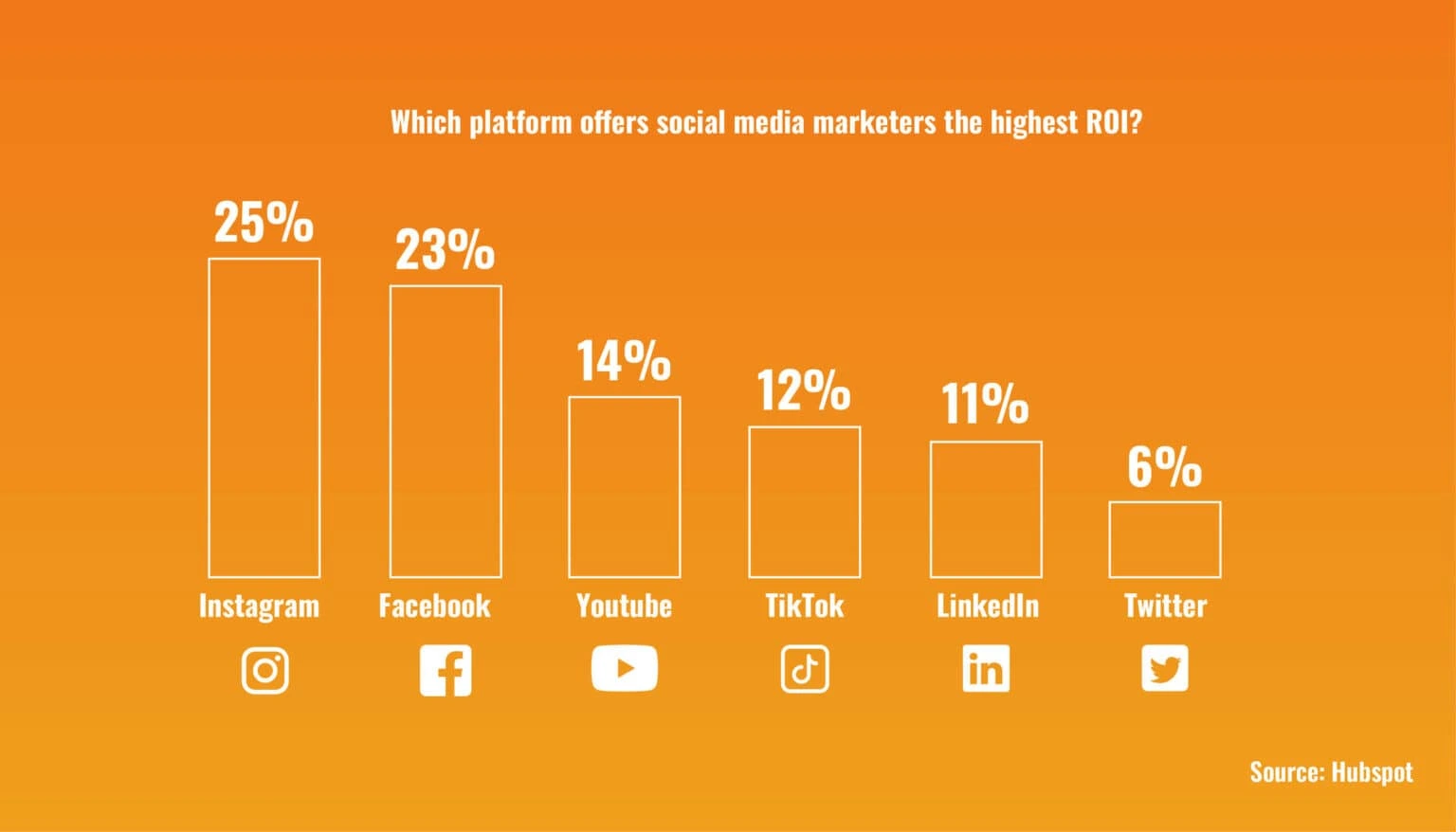
Source: HubSpot
The way users interact with websites varies significantly across mobile and desktop devices, underlining the need for tailored digital strategies. While mobile continues to dominate in volume with its on-the-go accessibility, desktop remains the go-to for deeper engagement and higher conversion rates. Businesses that take a one-size-fits-all approach risk losing opportunities to unlock the full potential of each platform.
- Mobile accounts for 50.84% of all online visits worldwide, while desktops make up 46.39%, and tablets account for just 2.76%. Source
- In the U.S., web traffic is almost evenly split between mobile (49%) and desktop (48%). Source
- Desktop users visit more pages on average (3.95) compared to mobile (2.67) and tablet users (3.21). Source
- Desktops still lead in conversions, with a rate of 3.7%, while mobile lags behind at 2.2%. Source
- Desktop users spend approximately 40% more time on sites than mobile users. Source
- Mobile has the highest bounce rate globally at 52.11%, compared to desktop and tablet. Source
Key Takeaway: Balance is the Key to Success
Each platform presents its own unique advantages and challenges, making it critical for businesses to adopt a balanced approach. Mobile dominates the landscape in terms of accessibility and volume, but its high bounce rates signal room for improvement in user experience and speed. Meanwhile, desktop captures users who are ready to invest more time and convert at higher rates. To thrive in this dual-channel environment, brands should optimize for mobile-first indexing without neglecting the immersive experiences desktop can provide.
Pro Tip:
Instead of simply adapting desktop sites to mobile, design for mobile-first usability. Focus on reducing load times, ensuring seamless navigation, and incorporating mobile-specific features like click-to-call or geolocation. On desktop, leverage the larger screen real estate to showcase in-depth content and include conversion-friendly elements like detailed comparisons, forms, and rich visuals.
For businesses navigating the complexities of multi-platform strategies, adopting a comprehensive digital marketing approach can be a game-changer. Partnering with full-service marketing experts ensures that your campaigns are optimized for both mobile and desktop audiences, driving better engagement and conversions across the board.
Revolutionizing Mobile Engagement with 5G Technology
As 5G becomes a global reality, it’s not just about faster connectivity—it’s about unlocking new dimensions of consumer engagement. The speed, reliability, and real-time interaction capabilities of 5G will empower marketers to deliver experiences that feel futuristic but are very much attainable today. Whether it’s immersive AR shopping, multiplayer interactive ads, or buffer-free live-streamed product demos, 5G is set to redefine what’s possible on mobile.
- By 2025, it’s projected that 5G networks will cover one-third of the global population, significantly boosting mobile marketing capabilities.
- 5G facilitates high-definition video streaming without buffering, enabling brands to host live events or product demos in real-time.
- 5G enhances capabilities for real-time interactions, allowing for interactive ads and real-time multiplayer games to engage audiences.
- Thanks to 5G’s increased data capacity, more complex and engaging AR/VR experiences will become commonplace.
- To capitalize on 5G, optimize content for speed and interactivity, ensuring apps and mobile websites load quickly and provide high-quality visuals.
The bold potential of 5G technology lies in its ability to create hyper-engaging experiences that resonate deeply with modern consumers. As the technology evolves, so should your marketing strategy. This is the moment to rethink how you leverage AR, VR, and interactive content to stand out in the crowded digital landscape. Pro Tip: Pair high-speed 5G capabilities with personalized, data-driven content to create seamless, responsive experiences that not only capture attention but also inspire loyalty.
Building Trust Through Privacy-First Marketing
In an era where consumer skepticism around data usage is at an all-time high, brands are under pressure to step up their game and adopt a privacy-first approach. With regulations like GDPR and CCPA reshaping the marketing landscape, compliance is no longer optional—it’s a competitive edge. Forward-thinking companies that prioritize transparency and ethical data collection aren’t just ticking legal boxes—they’re creating trust-based relationships that differentiate them in crowded markets.
- A survey reveals that 79% of consumers are concerned about how companies use their data, underscoring the urgency for brands to adopt privacy-first strategies.
- Meeting regulatory demands involves clear communication about data practices, ensuring users understand what data is being collected and its purpose.
- Robust consent tools, like cookie permission pop-ups, ensure brands meet compliance standards.
- To gather valuable insights responsibly, brands can encourage zero-party data collection through interactive tools like quizzes, polls, or loyalty programs.
- Personalization remains achievable when brands use ethical methods, such as analyzing anonymized datasets for macro-level trends.
Key Takeaway: Ethics Are the New Currency in Marketing
As privacy regulations become more stringent, the spotlight on ethical data practices will only grow brighter. Consumers are demanding accountability, and brands that meet these expectations will not only avoid compliance pitfalls but also stand out as trustworthy industry leaders. Finding ways to balance privacy with impactful personalization—such as through zero-party data—will be the key to sustainable customer engagement in a privacy-conscious world.
Pro Tip:
Create win-win scenarios by designing interactive experiences like gamified surveys or exclusive content access in exchange for zero-party data. This method not only respects privacy but also fosters meaningful engagement with your audience.
Driving Deeper Connections with Interactive and Gamified Content
As digital spaces become increasingly crowded, capturing audience attention requires more than just compelling visuals or clever copy. Enter interactive and gamified content: an innovative approach that transforms passive consumption into active participation. Whether it’s a branded quiz, an augmented reality (AR) experience, or a loyalty-driven game, these strategies tap into users’ desire for entertainment, belonging, and rewards—turning casual viewers into engaged participants.
- Gamified content keeps users entertained and invested, leading to higher engagement rates by tapping into the human desire for competition and rewards.
- Gamification allows for non-intrusive data gathering as users participate in fun, engaging activities.
- Interactive games that offer rewards or incentives, such as Starbucks’ holiday-themed AR games that give out loyalty points, are effective examples of branded gamification.
- Using AR to create quizzes that are more engaging and lifelike, such as a beauty brand creating an AR quiz to help users find the perfect skincare routine, enhances user experience.
- Ensure gamified experiences are ‘.
Key Takeaway: Interactive Content is the New Playbook for Engagement
Brands that integrate interactive and gamified elements into their strategies are accomplishing two critical goals: earning deeper, more authentic engagement and gathering valuable user insights without feeling invasive. The real opportunity lies in finding the right balance—creating experiences that are both entertaining and directly aligned with your target audience’s preferences. For brands looking to stand out, gamification isn’t just a trend; it’s a shift in how we engage with consumers.
Pro Tip:
Leverage your gamification efforts as part of a broader loyalty strategy. For example, allow users to redeem points earned through games for tangible rewards, exclusive offers, or early access to promotions—turning moments of interaction into long-term brand loyalty.
Why Sustainability is Shaping the Future of Mobile Marketing
Today’s consumers expect more than just great products—they want brands to reflect their personal values, including a commitment to sustainability and ethical practices. As mobile marketing becomes a dominant channel for customer engagement, weaving eco-conscious strategies into your campaigns isn’t only the right thing to do but a competitive necessity. By aligning your brand ethos with the values of a socially responsible audience, you not only stand out but also foster meaningful, trust-driven relationships.
- A Nielsen report highlights that 73% of global consumers are willing to change their consumption habits to reduce their environmental impact, underscoring the increasing demand for sustainability-focused initiatives in marketing strategies.
- The push for sustainability isn’t limited to physical products but also includes reducing digital carbon footprints by optimizing websites, mobile apps, and other digital assets for energy efficiency.
- Consumers care about visible action—brands that prominently showcase efforts like reducing waste, adopting sustainable materials, or supporting environmental causes are more likely to capture loyalty.
- Storytelling is powerful—sharing your brand’s sustainability journey, such as documenting the adoption of ethical supply chains or eco-friendly production methods, helps build emotional connections.
- Authentic partnerships matter—collaborate with eco-focused influencers who genuinely align with your mission to promote your brand’s ethical efforts, adding credibility to your campaigns.
Key Takeaway: Sustainability is a Marketing Imperative
As we head toward 2025 and beyond, sustainability isn’t just a trend—it’s the foundation of brand trust and differentiation. Mobile marketing, particularly, offers a unique platform to amplify these values, whether through energy-efficient platforms, transparent storytelling, or meaningful influencer collaborations. The brands that prioritize authentic sustainability efforts and communicate them effectively will be the ones to thrive in this values-driven landscape.
Pro Tip:
Avoid greenwashing at all costs—today’s consumers can spot insincerity from a mile away. Be transparent about your progress, challenges, and goals, no matter how imperfect they may be. By sharing ongoing efforts with honesty, you’ll not only avoid backlash but also build genuine, long-term trust with your audience.
Conclusion
The social media advertising landscape is undergoing a profound transformation, driven by mobile-first strategies, immersive experiences, and the rise of ethical consumerism. With billions of users accessing platforms like Facebook, Instagram, and YouTube primarily through mobile devices, brands must prioritize mobile optimization and leverage tools like short-form videos, interactive content, and shoppable ads to stand out. At the same time, advancements in 5G technology and augmented reality are setting the stage for more engaging, data-rich campaigns that capture audience attention like never before.
However, succeeding in this evolving digital ecosystem requires more than just keeping up with trends—it demands a commitment to providing authentic, value-driven content. Consumers today are drawn to brands that align with their values, whether through sustainability initiatives or privacy-conscious marketing efforts. Balancing innovation with ethical practices will not only help brands navigate rising consumer expectations but also foster long-term loyalty.
Are you ready to take your online strategy to the next level? Investing in social media management services can help streamline your content strategy, optimize ad performance, and maximize engagement across platforms. If you’re ready to supercharge your business, don’t hesitate to get in touch with our full-service marketing pros for a free quote. Let’s create campaigns that thrive in today’s dynamic digital environment.
About Social Media Advertising Trends To Watch Out For
This guide was written by the Scopic Studios team and reviewed by Araksya Hakobjanyan, SEO Lead at Scopic Studios.
Scopic Studios delivers exceptional and engaging content rooted in our expertise across marketing and creative services. Our team of talented writers and digital experts excel in transforming intricate concepts into captivating narratives tailored for diverse industries. We’re passionate about crafting content that not only resonates but also drives value across all digital platforms.
Note: This blog’s images are sourced from Freepik.
































